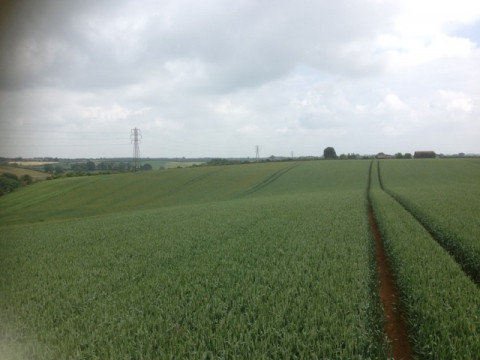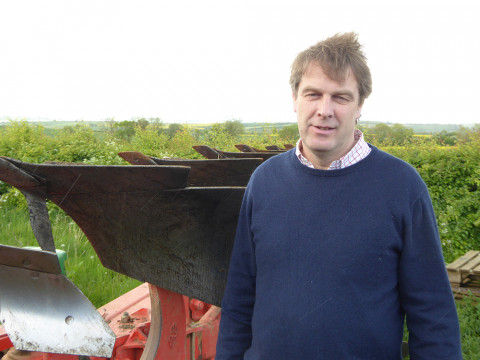Most of us have read of the resurgence in the use of ploughs recently, especially where black-grass control is under scrutiny. But a Warwickshire/Oxon farmer, Nick Gasson has found that it’s not all about ‘ploughing and be done with it.’ It’s more a strategy that needs close attention to detail.
Mr Gasson, farms just over 1000 acres on varying soil types, ranging from blue lias clay, heavy clay and ironstone. His cropping strategy is based on OSR, winter wheat, winter barley, followed by spring barley or spring beans. He found he had to change his rotation because of the threat of Black-grass and following trials has found certain benefits from ploughing but, only under certain circumstances.
“We hadn’t used the plough here since two-thousand one, two thousand two, said Nick Gasson, “up till then we used to plough everything. Since then we’ve normally used a Sumo Trio and a Gregoire-Besson Discordon prior to drilling. We would rather drill everything in the autumn, but then we get under pressure of time so we can’t always give enough attention to detail. This is where the problem with Black-grass starts. So now our rotation has changed and we drill quite a lot of Spring crops. It’s a much better solution.”
In 2010, Hampton House Farm went to Tallis Amos Group, the local John Deere dealer in Evesham and invested in a new six furrow Gregoire-Besson RB7, six-furrow mounted plough with hydraulic alignment and adjustable furrow width of 12 - 20 inches. They specified special ‘Euro’ skimmers which are slightly larger than standard skims and are used for burying high levels of trash and place weed-seeds, such as Black-grass, at the bottom of the furrow. This is the key process in curbing Black-grass. The plough is mounted on a John Deere 7930 which is more than man enough for the job, even in the heavy clay soils.
“We used to plough at around five or six miles an hour, commented Nick, ‘usually at sixteen inches furrow width and around nine inches deep, but now we have reduced the forward speed by one and half to two miles an hour, with the Euro-skimmers clearing all the trash into the bottom of the furrow. The Can, is not the answer to Black-grass. Proper burial of the weed-seeds and trash appears to have had a much better effect as some of the attached pictures will show. Prior to drilling, we just run through with a shallow cultivator so as not to bring trash up from the the furrow bottom.”
Working with Syngenta, Nick Gasson has been trialling different crops on a problematic field, using second winter wheat, hybrid winter barley and spring barley, to establish which is more competitive and therefore more controlling in a Black-grass situation. “At the moment (May 2015), spring and winter barley are way ahead of the winter wheat", added Nick.
“Ploughing to control Black-grass is only beneficial if the land has not been ploughed for a long time. It would have little or no effect by ploughing every year - in fact with regular ploughing, the results are likely to be totally opposite. You have to deal with the small problem areas as they arise and not let them take over. Pre-emergence is partly effective relying on moisture, so you really need forward and backward facing sprayer nozzles, more water for better coverage and spending more time on control measures. Even though we are not a fan of ploughing, we do it because we have to. But the Gregoire-Besson is a very durable and hard-wearing implement, and I don’t think we’ve bought any parts for it yet.”































